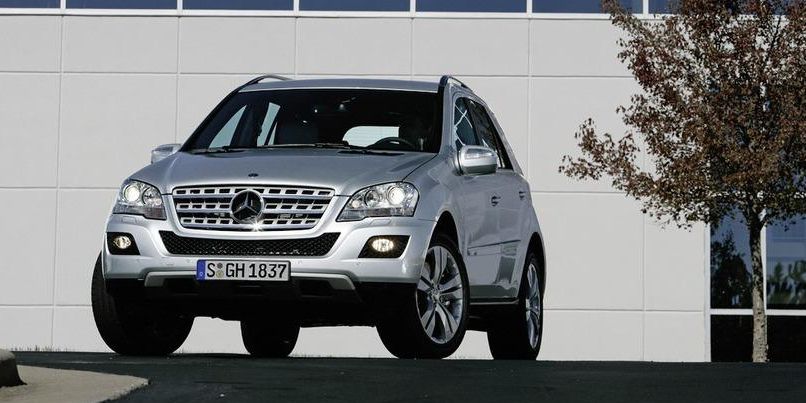Mercedes Recalling 300,000 2006–2012 Models over Brake Defect, Says Don't Drive Them

No injuries or deaths have been recorded because of the issue, but NHTSA is publishing a recall announcement after Mercedes has discovered a potential problem with brake performance in several older models due to corrosion from water exposure.The list of affected vehicles is long (see it below). It includes ML-class, GL-class, and R-class Mercedes vehicles built between 2006 and 2012. Nearly 300,000 vehicles are being recalled in the U.S., with another 700,000 in other countries. While rare, in some cases the problem could result in the brakes not working at all, which is why NHTSA has issued a stop-drive notification for these vehicles.
If you have a Mercedes ML-class, GL-class, or R-class built between 2006 and 2012, you might want to hang up the keys for a bit, especially if you’ve been hearing any hissing-type noises when you use the brakes or if the brakes have been acting unusual lately. Last week, the National Highway Traffic Safety Administration (NHTSA) has issued a recall for 278,000 of these vehicles, and it’s not a standard recall. Instead, it’s the scary kind with the red-letter warnings that signifies the cars should not be driven until the problem can be fixed.
NHTSA
The problem, and the reason this recall is serious, is that brake boosters might not work as intended “due to advanced corrosion in the joint area of its housing.” Because of the age of these cars, and the potential for prolonged water exposure, NHTSA has determined that the corrosion could lead to a vacuum leak at the brake booster, which would make the brakes not function as expected, i.e., requiring more pedal pressure or more distance to come to a stop. If the corrosion is “very severe,” NHTSA said, “it might be possible for a particularly strong or hard brake application to cause mechanical damage in the brake booster, whereby the connection between brake pedal and brake system would fail.” While NHTSA says this situation is “very rare,” if it does happen, then the brakes might not work at all. Hence the stop-drive notification. Mercedes has not yet clarified instructions for owners to get their cars to a dealership, given that they’re not supposed to be driven.
The best way to determine if your car might be affected is to enter your vehicle identification number (VIN) into the NHTSA database, but here are a few of the 53 different products affected by the recall in the U.S.: the 2007 AMG R63, GL350s from 2010 through 2012, and ML350s built between 2006 and 2011. We’ve included a list of affected model and model years below.
If you have a vehicle on the recall list, then it’s time to bring your car in to be inspected. Mercedes-Benz said the fix includes authorized Mercedes-Benz dealers removing the rubber sleeve from the brake booster housing in order to check the brake booster. If the booster is in rough shape, the mechanics will replace them as necessary.
While there are almost 300,000 affected vehicles in the U.S., Mercedes is dealing with a global recall of a million vehicles, and it was overseas that the problem was first detected. Based on one customer’s car, the automaker started an investigation in July 2021, which led to a field study in September and then more tests in November and December. Mercedes found one case in the U.S. “where poor brake performance was caused by a corroded brake booster” but decided in early May that the safety risks were high enough to issue a recall. Mercedes said it has confirmed that there were “no crashes, injuries, or deaths related to this defect.”
List of Affected Vehicles in U.S.:
2007 AMG R632007–2009 GL3202010–2012 GL3502007–2012 GL4502008–2012 GL5502007–2009 ML3202006–2011 ML3502010–2011 ML4502006–2007 ML5002008–2011 ML5502007–2009 R3202006–2007 R5002007–2011 AMG ML632006–2012 R3502008 R550
This content is created and maintained by a third party, and imported onto this page to help users provide their email addresses. You may be able to find more information about this and similar content at piano.io




